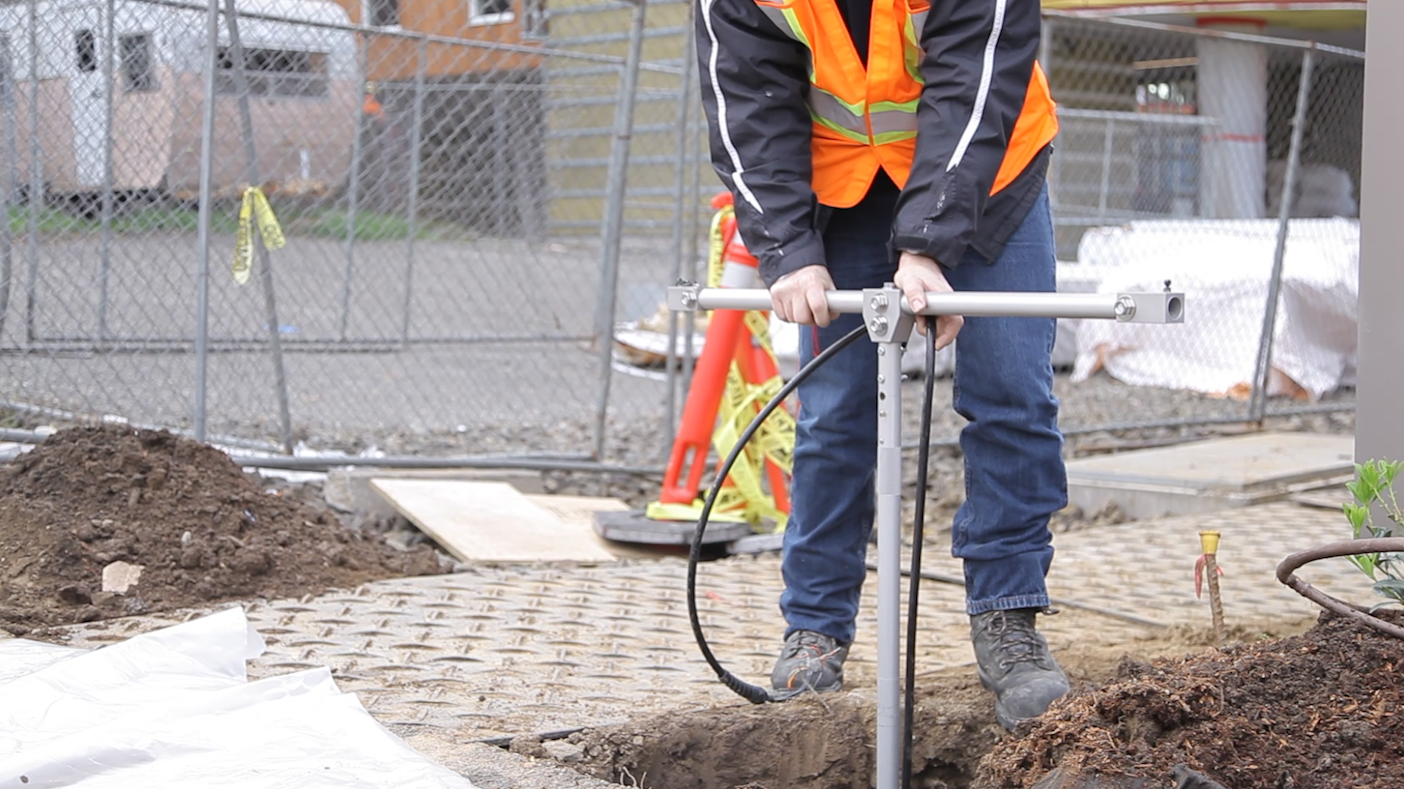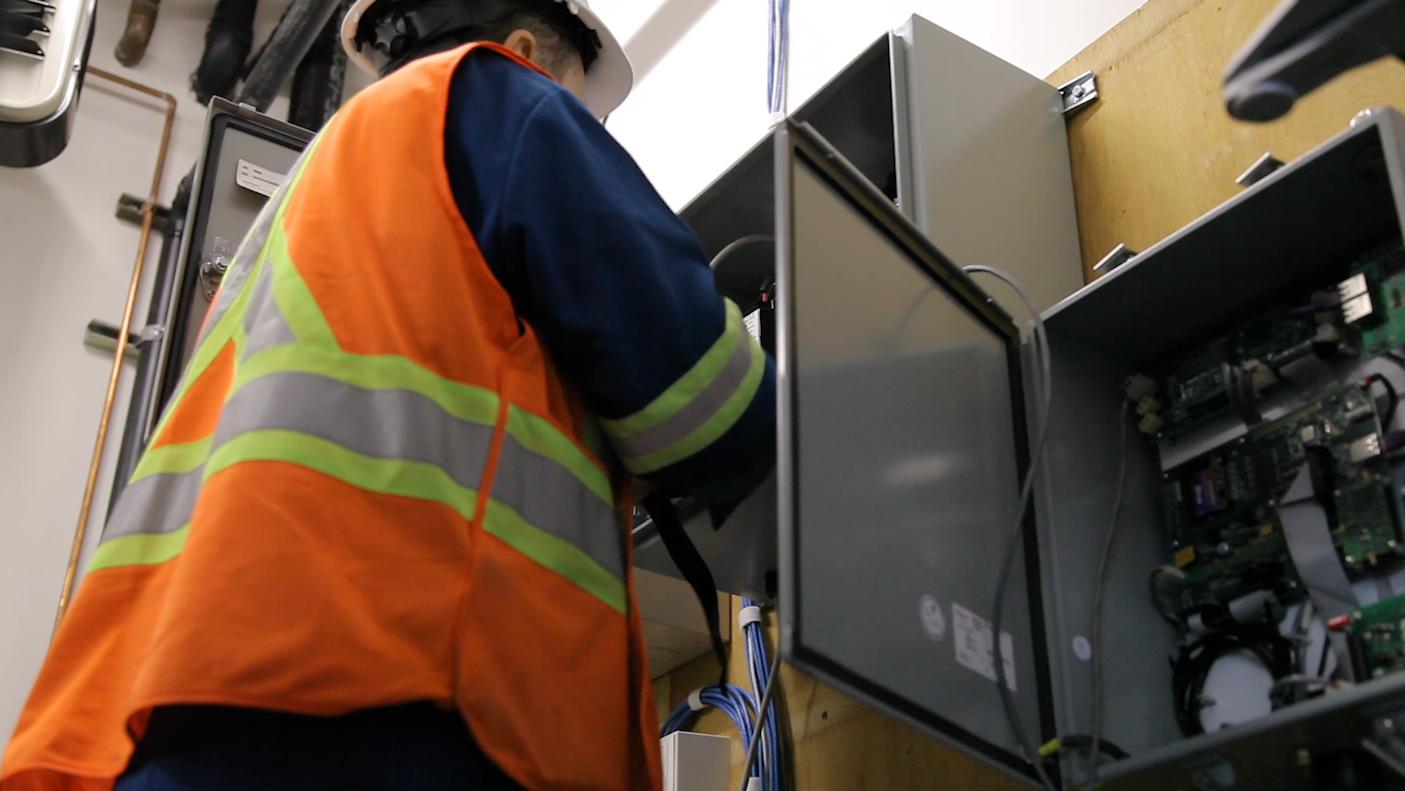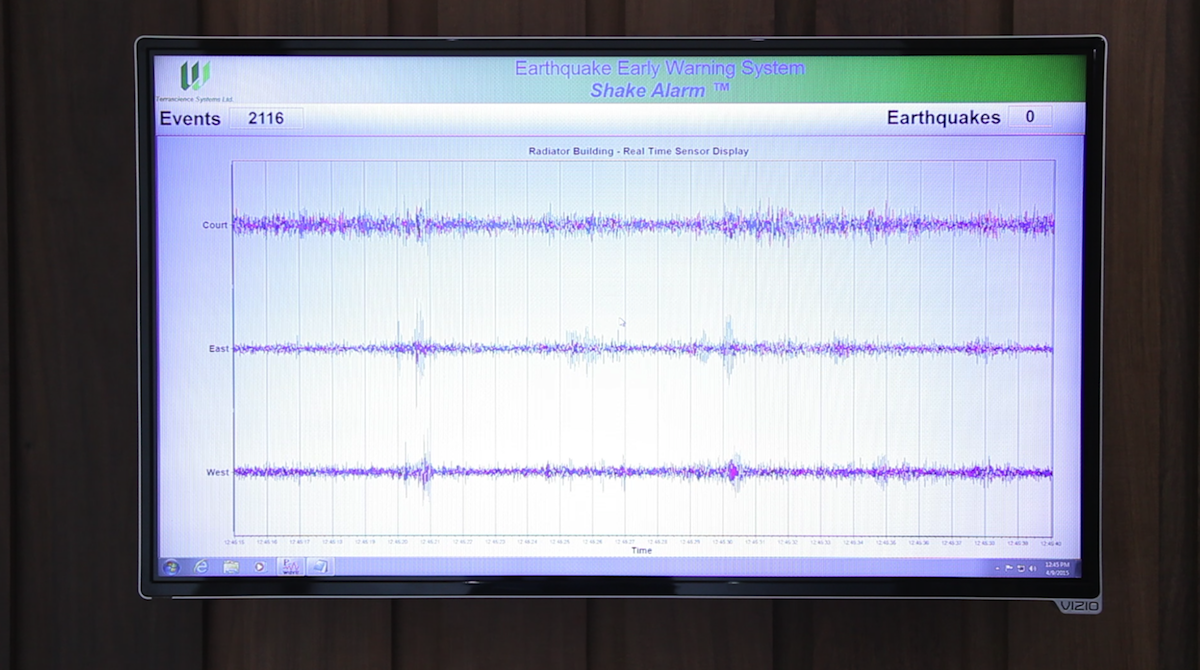CoreFirst LLC, a producer of seismic retrofit systems for commercial and institutional buildings, has partnered with Vancouver, B.C.-based Weir-Jones Engineering Consultants to commercialize Weir-Jones’ ShakeAlarm earthquake early warning system (EEWS) in the U.S.
The first U.S. installation of ShakeAlarm was recently completed at the Radiator Building, a 36,000-sf, five-story, wood-framed office building located in a densely populated neighborhood in North Portland, Ore.
 The ShakeAlarm system can recognize and quantify the faster but lower-energy seismic P-wave.
The ShakeAlarm system can recognize and quantify the faster but lower-energy seismic P-wave.
“It’s no secret that the Pacific Northwest is due for a large-scale seismic event,” said CoreFirst Principal Paul Conway. “What we haven’t had in place, until now, is an affordable system for building occupants that can provide critical advance warning and direct them to safety to minimize loss of life.”
The ShakeAlarm system recognizes and quantifies the faster but lower-energy seismic P-wave, which is the precursor to the more damaging S-wave. When used in conjunction with industrial or civil infrastructure control systems, these crucial seconds of warning can be leveraged to minimize runaway failure modes in critical structures, and shut down gas and electricity feeds to infrastructure, thereby minimizing fire risk to assets after a seismic event.
After detecting a P-wave, the ShakeAlarm system will:
• Immediately send a warning text message to the cell phone of every radiator occupant (regardless of whether he or she is in the building)
• Automatically shut down gas and electricity
• Automatically return elevators to ground level
• Open any metered doors
• Activate backup power systems
 The ShakeAlarm system initiates a number of safety measures once P-waves have been detected.
The ShakeAlarm system initiates a number of safety measures once P-waves have been detected.
Related Stories
| May 29, 2012
Reconstruction Awards Entry Information
Download a PDF of the Entry Information at the bottom of this page.
| May 24, 2012
2012 Reconstruction Awards Entry Form
Download a PDF of the Entry Form at the bottom of this page.
| Dec 29, 2011
Seismic safety in question at thousands of California public schools
California regulators responsible for enforcing earthquake safety laws have failed to certify more than 16,000 construction projects in California public schools, increasing the risk that some projects may be unsafe, according to a state audit report.
| Dec 2, 2011
What are you waiting for? BD+C's 2012 40 Under 40 nominations are due Friday, Jan. 20
Nominate a colleague, peer, or even yourself. Applications available here.
| Oct 18, 2011
Michel Bruneau wins 2012 AISC T.R. Higgins Award
The AISC T.R. Higgins Lectureship Award is presented annually by the American Institute of Steel Construction (AISC) and recognizes an outstanding lecturer and author whose technical paper(s) are considered an outstanding contribution to the engineering literature on fabricated structural steel.
| Aug 11, 2010
PCA partners with MIT on concrete research center
MIT today announced the creation of the Concrete Sustainability Hub, a research center established at MIT in collaboration with the Portland Cement Association (PCA) and Ready Mixed Concrete (RMC) Research & Education Foundation.
| Aug 11, 2010
VA San Diego Healthcare System Building 1 Seismic Correction
San Diego, Calif.
Three decades after its original construction in the early 1970s, the Veterans Affairs San Diego Healthcare System Building 1 fell far short of current seismic codes. This not only put the building and its occupants—patients, doctors, nurses, visitors, and administrative staff—at risk in the event of a major earthquake, it violated a California state mandate requiring all hospitals to either retrofit or rebuild.









